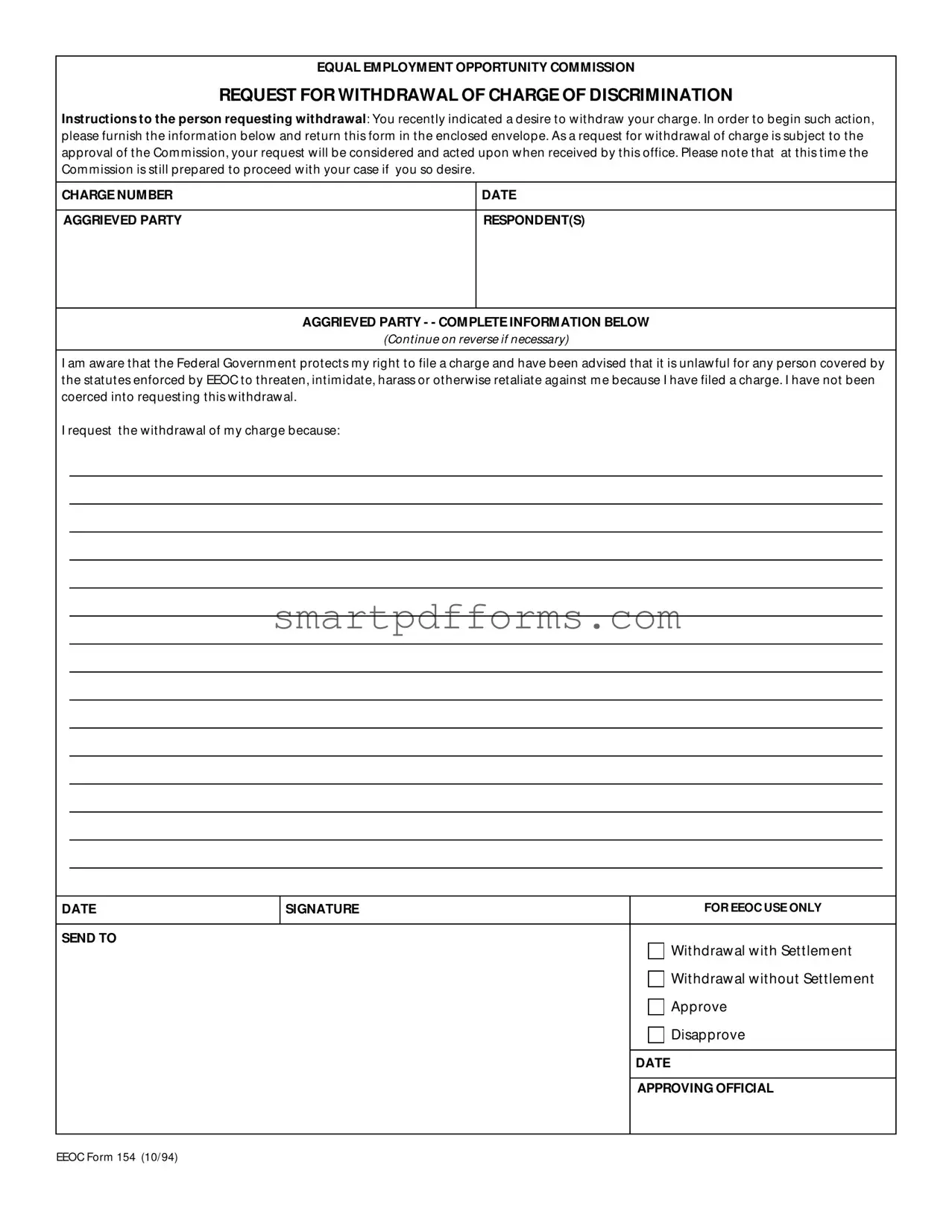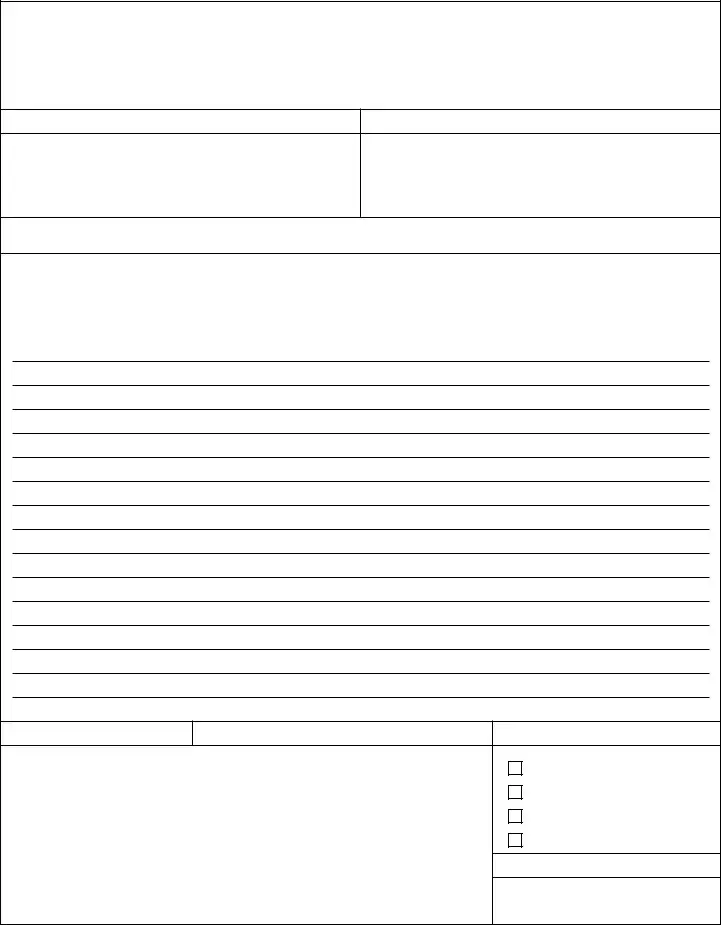Blank Eeoc 154 PDF Template
The EEOC Form 154, also known as the Request for Withdrawal of Charge of Discrimination, is a document used to formally ask the Equal Employment Opportunity Commission to withdraw a previously filed charge of discrimination. This form is vital for individuals who have resolved their issues independently or wish to retract their complaint for any reason. The process is subject to the Commission's approval, ensuring that the requestor's rights are still protected. Filling out and submitting this form is a significant step, and clicking the button below will guide you on how to properly complete it.
Make This Document Now

